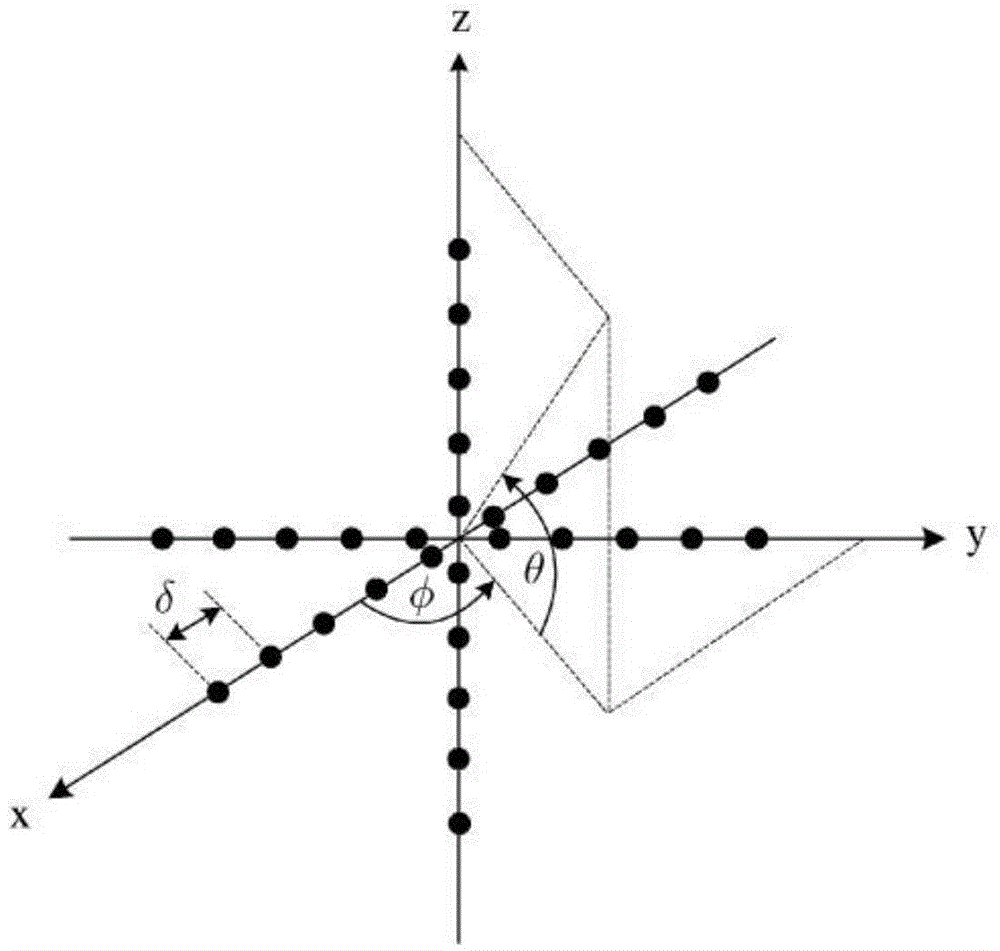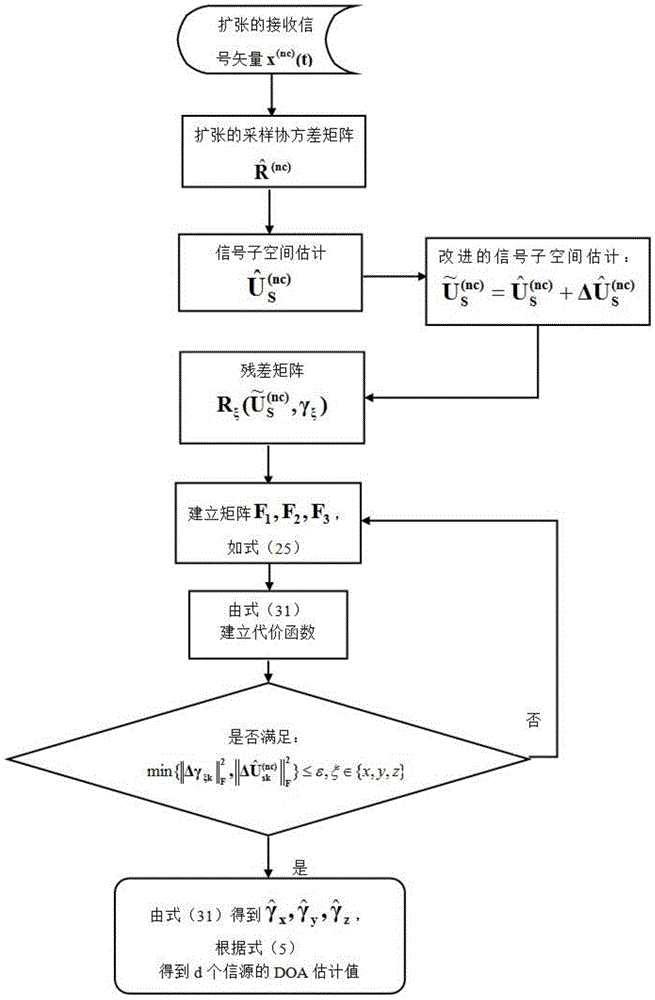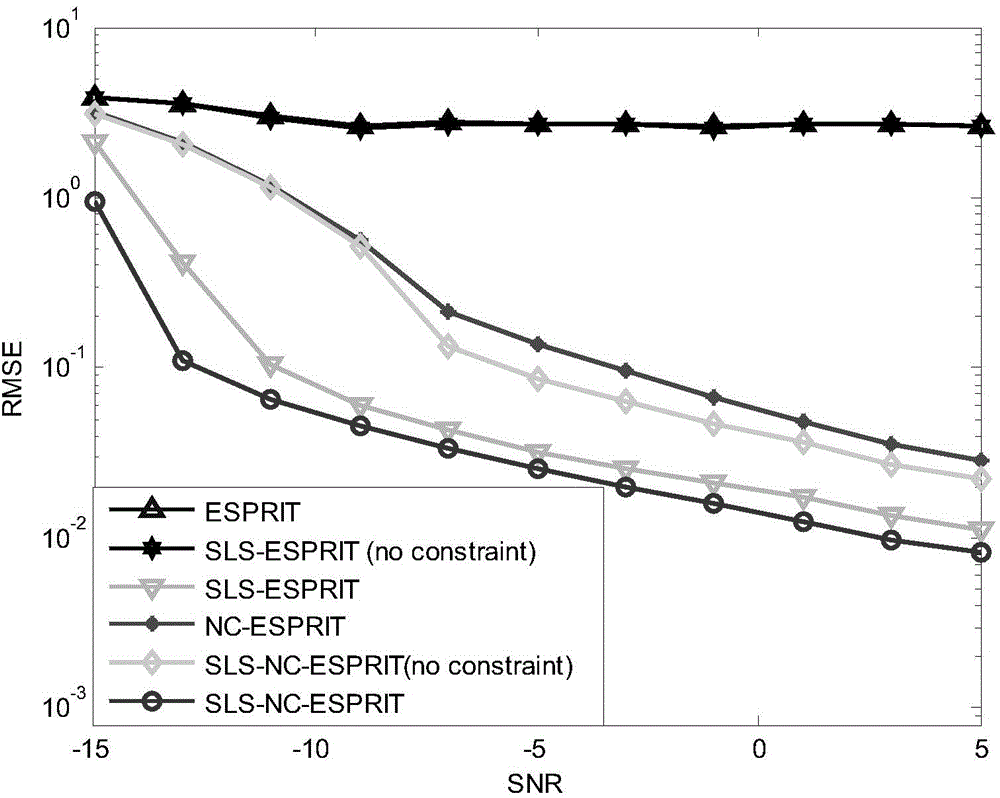DOA estimation method of 3-axis cross array
A technology of axis crossing and DOA, which is applied in the field of DOA estimation of 3-axis crossing arrays, and can solve problems such as inapplicable solutions
- Summary
- Abstract
- Description
- Claims
- Application Information
AI Technical Summary
Problems solved by technology
Method used
Image
Examples
Embodiment Construction
[0059] The present invention will be further described below in conjunction with the accompanying drawings and specific embodiments.
[0060] The 3-axis cross array structure is attached figure 1 As shown, it consists of three linear sub-arrays (with the origin as the geometric center) along the x-axis, y-axis, and z-axis. Assuming that all antenna elements are independent and equidistant, the distance δ between the elements of the 3 axes is the same. Assume that the number of elements in the 3-axis cross array is M, and there are d far-field narrowband signals arriving at the array, where M=M x +M y +M z , where M x , M y , M z Respectively represent the number of array elements contained in the sub-array in the x, y, and z-axis directions. Model the array receive signal as:
[0061] x(t)=As(t)+n(t) (1)
[0062] where s(t)=[s 1 (t),...,s d (t)] T is the signal vector, n(t)=[n 1 (t),...,n M (t)] T Contains additive sensor noise; is the signal-steering vector m...
PUM
 Login to View More
Login to View More Abstract
Description
Claims
Application Information
 Login to View More
Login to View More - R&D
- Intellectual Property
- Life Sciences
- Materials
- Tech Scout
- Unparalleled Data Quality
- Higher Quality Content
- 60% Fewer Hallucinations
Browse by: Latest US Patents, China's latest patents, Technical Efficacy Thesaurus, Application Domain, Technology Topic, Popular Technical Reports.
© 2025 PatSnap. All rights reserved.Legal|Privacy policy|Modern Slavery Act Transparency Statement|Sitemap|About US| Contact US: help@patsnap.com



